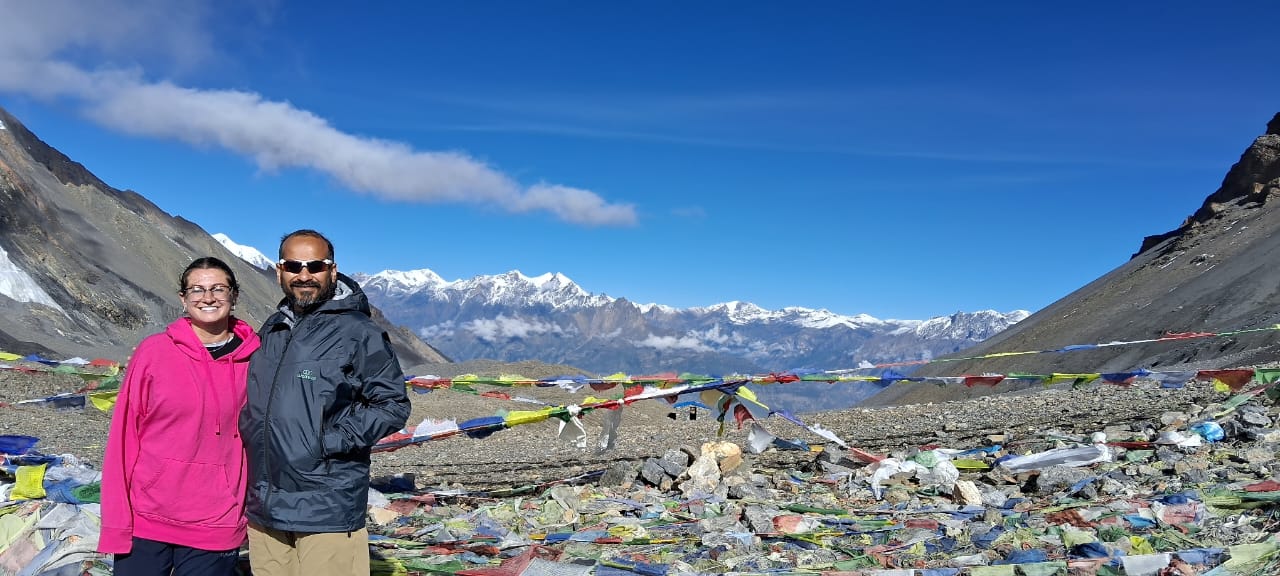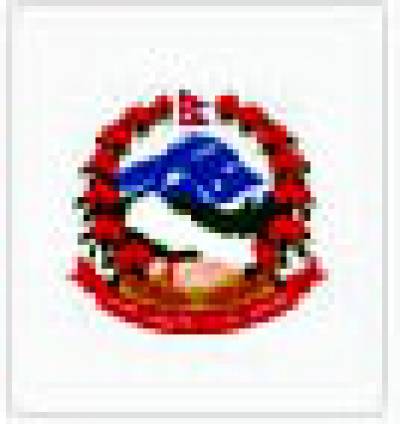ANNAPURNA CIRCUIT TREK 14 DAYS FROM POKHARA
The 14-day Annapurna Circuit Trek is a comprehensive trekking experience designed by Sherpa Expedition and Trekking, taking you on an unforgettable journey through the heart of the Annapurna region. The adventure begins with a scenic drive from Pokhara to Besishahar, followed by a transfer to Jagat. From there, you’ll start your trek to Dharapani, gradually gaining altitude as you pass through beautiful forests, terraced fields, and remote villages.
On the second day, the trek continues to Upper Pisang, offering some of the best views of the Annapurna and Pisang Peaks. The route winds through charming villages, where you can interact with the locals and immerse yourself in the mountain culture. On the third day, you’ll head towards Manang, passing through Ngawal Village, known for its monasteries and spectacular views of the Himalayas.
A rest day in Manang is essential for acclimatization, allowing you to adapt to the altitude. During this day, you can opt for a hike to Lama Cave or Ice Lake for incredible panoramic views. On Day 6, you’ll trek to Yak Kharka, followed by a short but steep hike to Thorong Phedi, where you’ll prepare for the challenging ascent to Thorong La Pass (5,416m) the next day.
After crossing Thorong La, you’ll descend to the spiritual town of Muktinath, famous for its religious significance. From Muktinath, you’ll drive to Tatopani to enjoy a relaxing soak in natural hot springs. The trek then continues to Ghorepani, passing through lush forests and charming villages.
On Day 13, you’ll hike to Poon Hill for a stunning sunrise over the Himalayas before trekking through Tadapani and Ghandruk. The final day involves a trek to Nayapul, followed by a drive back to Pokhara, concluding your 14-day Annapurna Circuit adventure.
ITINERARY
Day 1 : Drive from Pokhara to Jagat (1,300m) - Duration: 8-9 hours.
The journey begins with a scenic drive from Pokhara to Jagat. You will travel by local bus, enjoying the beautiful landscapes along the way. This day provides a perfect introduction to the natural beauty of the Annapurna region. Upon arrival in Jagat, you will be greeted by the first views of the Himalayas and settle in for the night.
Day 2 : Trek from Jagat to Dharapani (1,960m) - Duration: 5-6 hours.
Start your trek from Jagat to Dharapani. The trek begins with a gradual ascent, passing through dense forests and picturesque villages. Along the way, you'll experience stunning views of the surrounding mountains. After 5-6 hours of trekking, you'll reach Dharapani, where you'll spend the night, resting and acclimatizing to the elevation.
Day 3 : Trek from Dharapani to Chame (2,760m) - Duration: 5-6 hours
This is a 5-6 hours walking day of trekking as you ascend to Chame, the administrative center of the Manang district. Along the way, you’ll pass through various scenic villages, such as Bagarchhap and Danaque. The trek offers spectacular views of the Annapurna range and the imposing peaks of Lamjung Himal and Annapurna II. After a long day, you'll rest in Chame.
Day 4 : Trek from Chame to Upper Pisang (3,300m) - Duration: 5-6 hours.
Today's trek will take you from Chame to Upper Pisang, passing through forests of pine and oak trees, and giving you views of the majestic mountains. You will also witness traditional Tibetan architecture and culture in the villages. Upper Pisang offers a stunning view of Annapurna II, Pisang Peak, and the surrounding peaks. After the trek, you will stay in Upper Pisang for the night.
Day 5 : Trek from Pisang to Manang (3,500m) via Ngawal Village - Duration: 8-9 hours.
Today’s trek takes you to Manang, passing through the beautiful Ngawal village, known for its ancient monasteries and stunning Himalayan views. The route offers breathtaking scenery, with views of Pisang Peak, Annapurna II, and the Gangapurna glacier. Manang, a bustling village, will be your home for the night.
Day 6 : Rest Day at Manang for Acclimatization.
Manang is a great place for acclimatization. You’ll take a rest day to adjust to the altitude and allow your body to adjust to the decreasing oxygen levels. You can explore Manang, visit the Himalayan Rescue Association Clinic, or take a short hike to the nearby ice lake or the famous Lama Cave.
Day 7 : Trek from Manang to Yak Kharka (4,200m) - Duration: 4-5 hours.
Today’s trek is shorter but steeper as you head toward Yak Kharka. The landscape changes as you ascend higher into the alpine region, passing herders’ huts and grazing animals along the way. Yak Kharka is a small settlement surrounded by beautiful views of the Annapurna range and surrounding hills.
Day 8 : Trek from Yak Kharka to Thorong Phedi (4,600m) - Duration: 3-4 hours.
From Yak Kharka, you will trek to Thorong Phedi, the base camp for crossing the Thorong La Pass. The route takes you through a rugged and rocky landscape, and as you approach Thorong Phedi, the altitude begins to feel more noticeable. Spend the night in Thorong Phedi to rest and prepare for the big ascent tomorrow.
Day 9 : Trek to Muktinath via Thorong La Pass (5,416m) - Duration: 7-8 hours.
This is the most challenging and exciting day of the trek as you will cross the Thorong La Pass. The pass is one of the highest trekking passes in the world, standing at 5,416 meters. After a strenuous climb, you will reach the pass and be rewarded with panoramic views of the surrounding peaks. From the pass, you will descend to Muktinath, a sacred pilgrimage site for both Hindus and Buddhists.
Day 10 : Drive from Muktinath to Tatopani (1,200m) - Duration: 6-7 hours.
After a memorable day crossing the Thorong La, you will drive from Muktinath to Tatopani. This scenic drive offers views of valleys, terraced fields, and lush forests. Tatopani is famous for its hot springs, where you can relax and rejuvenate after the challenging days of trekking.
Day 11 : Trek from Tatopani to Ghorepani (2,860m) - Duration: 7-8 hours.
Today, you will trek from Tatopani to Ghorepani. The trek is filled with scenic views and takes you through dense forests and beautiful landscapes. Ghorepani, a small village in the heart of the Annapurna region, is known for its stunning views of the Himalayas.
Day 12 : Hike to Poon Hill (3,210m) & Trek to Tadapani (2,300m) - Duration: 5-6 hours.
An early morning hike takes you to Poon Hill, one of the best viewpoints in the Annapurna region. From here, you will have a spectacular sunrise view of the Annapurna, Dhaulagiri, and Machapuchare peaks. After the hike, you will trek down to Tadapani, a beautiful village known for its panoramic mountain views.
Day 13 : Trek from Tadapani to Ghandruk (1,650m) - Duration: 3-4 hours.
Today, you will trek from Tadapani to Ghandruk, a traditional Gurung village. The trek is relatively easy, and the views are breathtaking. Ghandruk offers a unique cultural experience, with its traditional stone houses and terraced fields.
Day 14 : Trek from Ghandruk to Nayapul & Drive to Pokhara - Duration: 5-6 hours.
On the final day of your trek, you will trek from Ghandruk to Nayapul, passing through picturesque villages and terraced fields. Once you reach Nayapul, you will drive back to Pokhara, where your incredible journey comes to an end.
SERVICES
Cost Included in Your Package
- Drive from Pokhara to Besisahar by local bus and Besisahar to jagat by local shared Jeep.
- Drive from Muktinath to Tatopani by local bus & Nayapul to Pokhara by private car at the end of the trek.
- Tea House/Lodge accommodation during the trek.
- Three meals a day (Breakfast, Lunch, and Dinner) are provided throughout the trek.
- Experienced and qualified trek leader (guide) with a government license, and an assistant trekking guide for groups of 8 or more trekkers.
- Porter service: One porter for every two trekkers to help carry your luggage.
- Porters' coverage: Their salary, food, accommodation, insurance, and safety equipment.
- The Annapurna Conservation Area Permit (ACAP) fee is included.
- The Trekkers Information Management System (TIMS) card fee is covered.
- Use of trekking gear: Sleeping bag, down jacket, duffel bag, and walking poles (if you don't have your own), to be returned after the trek.
- Assistance with emergency rescue operations (funded by your travel insurance) in case of severe health conditions.
- Sherpa Expedition and Trekking appreciation certificate after completing the trek.
- Oxygen meter to check your pulse, oxygen saturation, and heart rate twice daily, ensuring your health and safety during the trek.
Cost Not Included in Your Package
- International Flight to and from Nepal.
- Nepal entry visa fee: Visas can be obtained easily on arrival at Tribhuvan International Airport, Kathmandu. The fees are as follows:
- $30 USD for a 15-day visa
- $50 USD for a 30-day visa
- $125 USD for a 90-day visa
- Accommodation and meals in Pokhara (other than those provided during the trek).
- Extra night accommodation in Kathmandu or Pokhara due to early arrival, late departure, or early return from trekking for any reason outside the scheduled itinerary.
- Personal expenses such as shopping, snacks, bar bills, tea, coffee, hot water, bottled or boiled water, shower fees, Wi-Fi, laundry, telephone calls, battery recharges, extra porters, etc.
- Personal clothing and gear not provided in the package.
- Travel insurance: It is strongly recommended to have insurance that covers trekking in high-altitude areas.
- Tips for your guide and porters, which is customary in Nepali culture.
- Additional costs or delays caused by circumstances beyond our control, such as landscape changes, bad weather, itinerary modifications for safety, illness, changes in government policy, political instability, strikes, or other unforeseen events.
- NOTE: If you return earlier from the trek due to sickness or any other reason, expenses for flights, hotels, meals, and other services are nonrefundable. You will be responsible for any additional costs incurred in Kathmandu or Pokhara.
EQUIPMENTS
The following information will give you some idea about what you need to bring for the trek. It is important you do not forget the essential items, as this will determine your comfort and safety on the trek. Equally important is that you do not burden yourself with unnecessary equipment on the trek.
- Sleeping Bag (Sherpa Teams will provide but need to return after completing the trip)
- Duffel Bag (Sherpa Teams will provide but need to return after completing the trip)
- Fleece jacket or pullover
- Waterproof windbreaker or windcheater
- Thermal underclothes
- Rain poncho
- Down jacket (Sherpa Teams will provide but need to return after completing the trip)
- Fleece or wool trousers
- Sun hat or scarf
- Trekking pants (two pairs)
- Mittens or woolen gloves
- Hiking socks (several pairs)
- Moisture-wicking shirts, including t-shirts
- Trekking shoes or boots with spare laces
- Flip-flops or sandals for relaxing in the evenings
- Underwear (several pairs)
- Swimsuit or swimming costume
- Sunglasses
- Headlamp or flashlight/torch
- Sleeping bag (Sherpa Teams can provide this for you)
- Trekking poles (if desired)
- Hiking backpack with a capacity of at least 40 liters
- Small lock for your backpack
- Reusable water bottles (at least two liters)
- Water purification tablets or filtration device
- Wash towel
- Basic first aid kit
Toiletries (tissues, toilet paper, moisturizer, lip balm, sunscreen, sanitary pads, hand sanitizer, nail clippers, a small mirror, toothbrush, toothpaste, glasses, contacts, etc.)
GOOD TO KNOW
Before you embark on the Annapurna Circuit Trek, here are some key details and tips to keep in mind:
Altitude Awareness 🏔️: The trek reaches high altitudes (up to 5,416 meters at Thorong La Pass), which increases the risk of altitude sickness. Proper acclimatization is essential, so be sure to take it slow and listen to your body. Staying hydrated and taking regular breaks will help.
Weather Conditions 🌦️: The weather in the Annapurna region is unpredictable, and it can change rapidly from sunny to rain or snow, especially in higher altitudes. Be prepared for all conditions and pack layers for warmth. The best times to trek are from March to May (spring) and September to November (autumn), as the weather is generally stable and the trails are clear.
Fitness Level 💪: The Annapurna Circuit Trek involves long trekking days, steep climbs, and high altitudes, so a good level of fitness is recommended. Engaging in regular cardiovascular activities like walking, hiking, and cardio exercises will help prepare your body for the challenge.
Permits & Documentation 🛂: You will need two main permits for the Annapurna Circuit Trek: the Annapurna Conservation Area Permit (ACAP) and the Trekkers’ Information Management System (TIMS) card. Both can be easily obtained in Pokhara or Kathmandu before you begin your trek. Your trekking agency will also assist you with these arrangements.
Respect for Local Culture 🙏: The Annapurna region is home to diverse ethnic groups such as the Gurung, Thakali, and Manangi people. Always show respect to their local customs and traditions. When visiting villages or monasteries, ask for permission before taking photos, and be considerate of local customs, such as greetings and dress codes.
Trekking Gear 🎒: Be sure to pack appropriate clothing and gear for the trek. Some key items include sturdy trekking boots, waterproof outerwear, warm clothing (especially for high-altitude sections), a sleeping bag, and walking poles. Don’t worry if you’re missing some gear; it can be rented in Pokhara.
Health & Safety 🩺: Carry a personal first-aid kit, any essential medications, and some basic medical supplies. Guides will have a basic first-aid kit as well. If you experience symptoms of altitude sickness (like dizziness or headaches), inform your guide immediately. Travel insurance that covers emergency evacuation is strongly recommended.
By preparing yourself with the right information and gear, your Annapurna Circuit Trek will be safe, enjoyable, and memorable!
This carefully crafted itinerary allows trekkers to adjust to the altitude gradually, enjoy scenic beauty, and immerse themselves in the local culture along the way.
🏥 Health & Safety
Your health and safety should always be the top priority. Keep the following in mind to stay safe during your trek:
Altitude Sickness Awareness: Altitude sickness is a risk above 3,000 meters, and symptoms can be mild to severe. Stay hydrated, take acclimatization days, and pay attention to your body. If symptoms worsen, descending to a lower altitude is essential.
Emergency Evacuation: Ensure you have travel insurance that covers emergency evacuation in case of serious illness or injury.
Medical Kit: Your guide will have a basic medical kit. However, always carry essential personal medications and items like pain relievers, sunscreen, and lip balm.
📋 Packing Essentials
Here is a list of must-have items for the Annapurna Circuit Trek:
- Clothing: Layers are key. You’ll need lightweight clothing for lower altitudes and warm layers for higher altitudes.
- Footwear: Durable trekking boots with ankle support are a must.
- Sleeping Bag: A good-quality sleeping bag is crucial, as temperatures can drop significantly at night.
- First Aid Kit: Pack any medications you need, and don’t forget blister care items and sanitizers.
- Water Purification: A water purifier or purification tablets to ensure safe drinking water.
Make sure to check your packing list and adjust according to the season.
📅 Trekking Seasons
The ideal seasons to embark on the Annapurna Circuit Trek are spring (March-May) and autumn (September-November). These months provide the best weather, clear skies, and beautiful views of the Annapurna massif.
MAP
PHOTOS/Videos
Departures
Select a departure month
Fill out the form below and a Travel Expert will reach out to create your perfect tour.
FAQS
What is the Annapurna Circuit Trek?
The Annapurna Circuit Trek is a popular long-distance trek in Nepal, taking you around the Annapurna Massif. It offers stunning views, cultural encounters, and varied landscapes, with a challenging high-altitude crossing at Thorong La Pass (5,416m).
How long does the Annapurna Circuit Trek take?
The trek typically takes between 12 to 14 days, depending on the chosen itinerary and acclimatization schedule.
Do I need previous trekking experience?
While previous trekking experience is helpful, it is not a requirement. However, you should be physically fit and prepared for long days of walking, steep ascents, and high-altitude conditions.
What is the best time to do the Annapurna Circuit Trek?
The best months are March to May (spring) and September to November (autumn), as the weather is more stable and the skies are clear, offering great views.
How difficult is the Annapurna Circuit Trek?
The trek is moderate to challenging. You’ll be trekking for several hours a day with significant elevation gain, including high-altitude passes. Proper acclimatization and physical preparation are essential.
What are the accommodation options on the Annapurna Circuit?
Along the route, you’ll find teahouses or lodges providing basic accommodation. They typically offer a bed, hot meals, and sometimes hot showers. However, expect basic facilities, especially in remote areas.
What permits are required for the Annapurna Circuit Trek?
You will need the Annapurna Conservation Area Permit (ACAP) and the Trekkers’ Information Management System (TIMS) card. These can be obtained in Pokhara or Kathmandu.
How do I prevent altitude sickness?
To avoid altitude sickness, ensure you acclimatize properly by taking rest days, drinking plenty of water, and ascending gradually. If symptoms occur, descend to a lower altitude immediately.
What should I pack for the trek?
You should pack warm clothing, good trekking boots, a sleeping bag, a first aid kit, a water purification system, trekking poles, and snacks. You can also rent gear in Pokhara if necessary.
Is it safe to trek in the Annapurna region?
Yes, the Annapurna Circuit Trek is generally safe, but like any trek in high-altitude areas, there are risks of altitude sickness and injury. Make sure to go with a certified guide or trekking agency, follow safety protocols, and have travel insurance.
Latest Traveller’s Reviews
Travel experiences of our clients who recently returned from their trips.
100%
Based On 5428 Reviews
Marcel Mastenbroek
Netherlands
April 9, 2025
Beautiful adventure
My brother and I had a great trip to the Everest Base Camp. Together with Santa our very well informed gide, who took care of us in a fantastic way and gave us much information during the hike, and Gulzen our porter (who carried each day our two bags of 10kg each plus his own bag....unbelievable). We had a wonderful time in the beautiful Himalayas, it was a lifetime experience!
Isabelle Fournier
Belgium
April 3, 2025
Incredible Journey With a True Legend
The Everest Three Pass Trek is hands-down the most beautiful and challenging trek I’ve ever done, and it was made unforgettable by our amazing guide, Pem Dorje Sherpa, from Sherpa Expedition & Trekking. Pem Dorje is a legend in every sense—calm, wise, strong, and full of stories. He knew the trails inside out and constantly kept us motivated, safe, and smiling. From the glacier crossings of Cho La to the dramatic views from Gokyo Ri, he made every moment special. One day, I struggled with altitude headaches, and Pem Dorje immediately adjusted our plan, gave me warm soup, and walked beside me at my pace. That level of care made all the difference. The trail itself is pure magic—massive peaks, prayer flags fluttering in the wind, quiet Sherpa villages, and stunning alpine lakes. We even spotted musk deer and Himalayan pheasants! Sherpa Expedition handled everything professionally, from airport pickup to gear checks. The porters were kind and efficient, and we had zero logistical issues. If you want to push yourself while being fully supported by a kind, knowledgeable guide, ask for Pem Dorje. You’ll finish stronger than you ever imagined—and happier, too.
Isabella Martinez
Australia
April 1, 2025
Sherpa-Led Magic in the Mountains – Guided by Tsering Phurba Sherpa
To say that the Everest Three Pass Trek was life-changing would be an understatement. The stunning peaks, vast glaciers, and kind people left an imprint on my soul. But what truly made the trek magical was Tsering Phurba Sherpa, our incredible guide from Sherpa Expedition & Trekking. Tsering was full of joy, laughter, and strength. He was a motivator and a protector—always keeping an eye on our group, adjusting our itinerary when needed, and celebrating every little win with us. I remember the cold mornings and long days, and how Tsering always had hot tea or a snack ready when we needed it most. His care was beyond professional—it felt personal. He even helped me with my backpack straps to ease shoulder strain, and gave away his spare headlamp to someone who lost theirs. The trek itself was everything I hoped for—raw, rugged, and rewarding. We hiked through snow, ice, rock, and forest. The Gokyo Lakes glowed like crystals, and Everest from Kala Patthar was overwhelming. Sherpa Expedition created the perfect balance between challenge and care. If you want to do this trek right, go with them—and ask for Tsering Phurba. You won’t regret it.
People Considering This Package Right Now Check availability






















